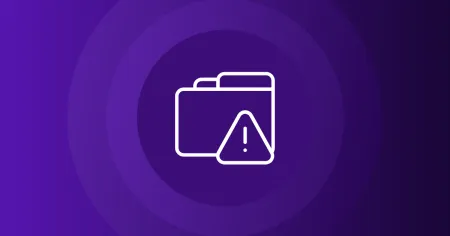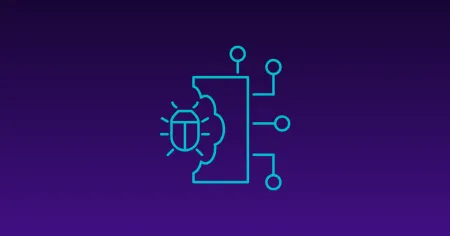Blog
Aug 1, 2022
11 Tips For Beefing Up Your Resume And Getting A Job In Cybersecurity
Learn how to prepare your resume in an effective and professional manner to land a cybersecurity job.
6 min read

Did you know that there are over 700,000 cybersecurity jobs unfilled in the US and nearly three million open positions worldwide? Cybersecurity careers are exploding in popularity, and for a good reason. It’s a burgeoning field with endless opportunities to advance your career. More and more people are drawn to the profession to help protect and defend people, businesses, and society from attackers.
There’s no better time to start or advance your career in cybersecurity, and a well-polished resume is an essential step to getting your name in front of hiring managers and recruiters. Your resume is a critical tool to help you land an interview for your dream cybersecurity job. Once you get the interview, it’s time for you to shine and get the job!
Apply these eleven tips when preparing your resume to help you get through the screening process and land multiple interviews for a new job in cybersecurity. Resume guidelines vary by country, so please read up on what’s acceptable for your geographic area.
Know Where You’re Submitting Your Resume
Know your audience, whether it’s a live human being or a machine designed to collect and scan resumes for specific keywords. You should customize your resume depending on who your audience is. You have more freedom with formatting when submitting to a person versus submitting to an online job portal. If you’re submitting online to an applicant tracking system, you want to make sure that you include relevant keywords that the system will look for on your resume.
Customize Your Resume for Each Position
Choose relevant keywords from the job posting and include them where appropriate on your resume. This will make it easier for employers to find your application during their initial search process, especially from the large applicant tracking systems many employers use.
It’s essential to ensure that the skills listed on your resume match what they’re looking for in an applicant. Don’t include skills you don’t have just because it’s mentioned in the job posting. If you have the skill, great! If not, embellishing your resume is never a good idea.
Use a Consistent, Simple Format
Use a professional font such as Arial or Times New Roman. A good resume is also well-organized, informative, and error-free. Bullet points rather than paragraphs make it easier for hiring managers to read. Proofread your resume carefully to ensure no typos or grammatical errors. An unprofessional resume can be the difference between getting called in for an interview and being rejected without consideration.
It takes time to craft a great resume to help you stand out from the competition. Remember, the hiring manager may be sorting through tens or hundreds of resumes! Make it easy for them to read your resume.
Don’t Include a Picture, Your Gender, Marital Status, or Age
It’s just not necessary.
Name and Contact Information
Your email address should be professional. Include a link to your Linkedin profile, Github, or other social media profiles where you actively share cybersecurity content.
Create a Summary Statement Explaining Who You Are and What You Bring to the Table
Create a Summary statement explaining who you are and what you bring to the table. This should be one or two sentences long and focus on your core competencies and skill sets. The “Summary” statement will allow employers to quickly understand why they should keep reading about you instead of another candidate’s qualifications.
Include Paid & Unpaid Experience in Your Work History
Include your paid and unpaid work experiences, internships, fellowships, and volunteer opportunities. Even if the work was unpaid, this is valuable experience that helped you develop the skills employers are looking for. Start with your most recent position and work backward. For each position, include the following information:
- The name of the organization
- Your job title
- The dates you worked there
- A bullet point list of your responsibilities and accomplishments
If you do not yet have a relevant work history, you might include your “Education” and “Certifications” sections before your “Work History” section.
Include Education That’s in Progress and Completed
Suppose you are trying to land an interview for your first cybersecurity position and do not have any relevant work history. In that case, you should include the “Education” and “Certifications” sections above “Work History.” You should include your expected graduation date if you are still in school. List any relevant courses you’ve taken and different technologies, programming languages, or operating systems you’ve used. Include various projects you’ve completed as part of a class, a service project, or volunteer projects. Projects help to show how well you work with others rather than just your technical skills.
Include Cybersecurity Certifications and Industry Training
Did you know that reports showed that nearly 59% of all cybersecurity positions require at least one certification? Entry-level workers can obtain fundamental certifications as an entry point into cybersecurity. Experienced workers should aim for more advanced certifications such as the coveted OSCP, which requires holders to pass a rigorous exam and prove they have the right skillset to be a successful penetration tester.
If you have completed any certifications, you can list them in a separate “Certifications” section. You should also include industry-related certifications or training, which shows employers that you have extensive knowledge of a specific industry. Knowledge of a specific industry is a great asset when getting started in a career in cybersecurity.
If you are currently working on any certifications or other industry-related training, you can include those in this section along with the anticipated completion date. If you don’t have cybersecurity certifications, Offensive Security offers flexible training plans for all skill levels. Gain practical, job-ready skills that will prepare you for a thriving career.
Use Action Verbs to Describe Accomplishments
Use action verbs such as “managed,” “created,” or “improved,” and avoid generic terms like “developed,” which don’t tell employers what you did. If you can quantify specific achievements, even better! Some examples might be “managed a team of 12” or “increased sales by 25%.” Even if the accomplishment might not be cybersecurity-related, it can still show employers you have some of the professional or soft skills they are looking for.
Highlight the Specific Hardware and Software With Which You Have Experience
If you have several years of experience with technology but are just getting started with cybersecurity, consider adding a “technical skills” section to your resume highlighting programming languages, operating systems, hardware, or software. Perhaps you have extensive use of a particular piece of software as an end-user, you can highlight your experience in this section as well. Only include information in this section that can’t be easily identified in the other sections of your resume.
These eleven tips show you how to create an effective and professional resume that will set you apart from the competition. With these tips in mind, you can create a resume that helps you land interviews for a new job in cybersecurity.
Stay in the know: Become an OffSec Insider
Get the latest updates about resources, events & promotions from OffSec!
Latest from OffSec

Research & Tutorials
CVE-2024-13059: Exploiting Path Traversal in AnythingLLM for Remote Code Execution
Discover CVE-2024-13059, a critical vulnerability flat that affects AnythingLLM’s handling of ASCII filenames in the multer library.
Apr 17, 2025
2 min read

Enterprise Security
How OSCP Holders Can Lead Their Teams to Greater Cybersecurity Resilience
Champion OSCP training in your organization to build a unified, resilient security team.
Apr 11, 2025
6 min read

Research & Tutorials
CVE-2024-57727: Path Traversal Vulnerability in SimpleHelp Web Application
CVE-2024-57727 lets attackers read sensitive files via path traversal in SimpleHelp. Learn more about how attackers exploit this flaw.
Apr 10, 2025
3 min read